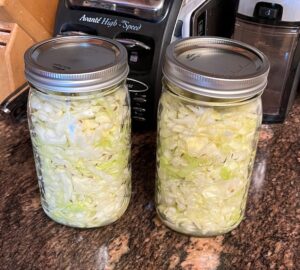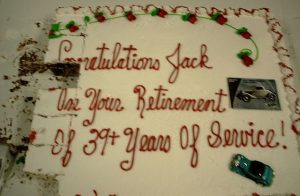Way back when I did more things that were political and public, friends and I learned that it’s possible to get through life without hating, without accusations based on little or no evidence, and without destroying the lives of others. We learned, quite simply, how to learn before judging. We talked about folk dance and folk music (in fact, some of us danced and some of us sang), we learned much history to advance our understanding. I can still do some of the dancing (although these days it hurts, physically, which is ironic) and sing some of my favourite songs to myself (not to others beachhead really, I have no voice) and I still learn the history. What I’ve never stopped doing and what I can still do well is cooking. Hunger for food helps feed the equally-important hunger for understanding. Let me introduce you today, then, to four cookbooks that have served me well when I need to remember how complex and wonderful different cultures are and how there are many paths to avoiding hate.
The first book is Christiane Dabdoub Nasser’s Classic Palestinian Cuisine. A friend who is Palestinian Australian said I was missing her cultural background from my book collection, even though I was cooking food that was very similar to her own cuisine. She was right. I had not even begun to understand where her food and foodways were like mine. We talked a lot, and we ate each other’s cooking, which helped, but my library didn’t reflect this at all.
I couldn’t find a Palestinian Australian cookbook. Nasser’s was published in London, though, so it’s close enough for now. By ‘for now’ I mean I need more. One cookbook is not even close to a whole culture. The first cookbook is to open a window and to begin to see through that open window. I begin learning where I make non-rational judgements and where I lack knowledge and understanding, and then the recipes I cook help me break down my issues and to stop applying them to someone else’s culture. It helps me see people, and to stop hiding behind my own biases. It helps me look for what we share and to avoid hate.
I make a variant of Nasser’s potato with rosemary dish for Passover. It’s wonderful. Sadly, there are never leftovers. For dinner tonight, I’m choosing between two different eggplant (aubergine) salads. I’m hungry just thinking about it.
I chose the second book because I needed a cup of coffee. I’ve just finished my cup, and I feel almost awake. Given I’m writing on a hot summer’s day, this is a good thing. Antony Wild’s Coffee: A Dark History is not my favourite history of coffee volume. It was the first I saw when I looked at my shelves. It is, however appropriate for today.
We all carry a lot of half-understood history with us. All our foodstuffs and foodways have their own history and sometimes we know things and we think we know things and… it helps to find works that debunk and reconsider and don’t shy away from the less-good elements of the past.
The history of coffee walks hand-in-hand with empire-building and slavery if you want to focus on one side of its history. Coffee offers so much more than this, however, and I’d not use Wild’s book alone. Coffee helped European political blokes talk to each other through coffee houses from the seventeenth century. It changed the shape of discourse, in fact, in those countries. It shaped that discourse in part of the Middle East. Opening the door to coffee history is to open the door to understanding how even the history of a single type of bean carries with it cultural complexities and is worth understanding.
The last two books are, in my library, a pair. I use them a lot. They’re both by Claudia Roden. Roden does all the things I’ve talked about. She breaks food and foodways down into specific cultures: her volume The Book of Jewish Food is a masterpiece in this way. It doesn’t contain my foodways (there’s a story in that) but it’s given me a basic understanding of how Jewish food and foodways can be interpreted and understood in a wider sense. I can integrate this with my own historical knowledge (and it helps being an ethnohistorian, I admit) and I can talk Jewish food with most people. I have favourite Jewish foodways, and I explore them separately, but I always begin with Roden’s work.
The same thing applies to my learning about the different food and foodways of the Middle East. Her A Book of Middle Eastern Food is the book that began me on this wonderful journey, when I was a teenager. I owned my own copy from the moment I left home. My little paperback is from 1982. Without it, I would not have known enough to ask friends “What should I look for in a cookbook that takes into account your background.” I have hundreds of cookbooks now, but this was one of my first, and I still love it. My copy is battered and much used.
Each note Roden makes about this cuisine or that has sparked research at my end. I find more recipes, look into the culture that owns them, begin to understand the food customs and rules… and remind myself that doing this help me remember, every day, that respect and understanding trump hate. This means, of course, that I need another cookbook. It’s been a very difficult year so far for me as an Australian Jew. My obligation from that (according to the way I see the world) is to understand better other people who are also hurting. I shall watch for cookbooks and recipe websites. This is not the only way I try to understand, but it’s definitely the most fun.


 I wish I had been taught Chemistry differently. To this day, most of the chemistry I learned in school was as a side-benefit of my biology classes. I loved bio, and survived chemistry (required) and physics (ditto) in order to take the advanced biology class my senior year, wherein a good deal of chemistry was taught in passing, particularly when we were looking at DNA and genetics. But beyond that, Chemistry the subject seemed utterly detached from things I cared about. Okay, some times you just have to buckle down and get through the classes you don’t much care about (I’m looking at you, PE) to get your ticket punched and make your way out of high school. But I think I would have learned more if it had been related to something else. Like food.
I wish I had been taught Chemistry differently. To this day, most of the chemistry I learned in school was as a side-benefit of my biology classes. I loved bio, and survived chemistry (required) and physics (ditto) in order to take the advanced biology class my senior year, wherein a good deal of chemistry was taught in passing, particularly when we were looking at DNA and genetics. But beyond that, Chemistry the subject seemed utterly detached from things I cared about. Okay, some times you just have to buckle down and get through the classes you don’t much care about (I’m looking at you, PE) to get your ticket punched and make your way out of high school. But I think I would have learned more if it had been related to something else. Like food. For a couple of months, my younger brother and I have been having a discussion about Shakespeare. It is not acrimonious, but there is some increasing frustration on both sides. On my side–well, Shakespeare is not my favorite writer, but he’s right up there, and I enjoy his work and particularly enjoy it because, in the course of my education, I learned something of the world in which it was written–his influences, his commercial competitors, the world in which he was writing. Also: I’m a big nerd, and knowing this stuff makes me happy.
For a couple of months, my younger brother and I have been having a discussion about Shakespeare. It is not acrimonious, but there is some increasing frustration on both sides. On my side–well, Shakespeare is not my favorite writer, but he’s right up there, and I enjoy his work and particularly enjoy it because, in the course of my education, I learned something of the world in which it was written–his influences, his commercial competitors, the world in which he was writing. Also: I’m a big nerd, and knowing this stuff makes me happy. For the past few decades, whenever I have seen an ad that says something like “The SFPD is hiring” or “You could be a police dispatcher” or something like that, there is a small, weird part of me that thinks, maybe I should apply for that. Despite the fact that I hate job hunting, and despite the fact that I don’t want to be a firefighter or police officer (and am well past the age where my application would produce anything but laughter). The urge to figure out the next thing is still deeply massaged into my psyche.
For the past few decades, whenever I have seen an ad that says something like “The SFPD is hiring” or “You could be a police dispatcher” or something like that, there is a small, weird part of me that thinks, maybe I should apply for that. Despite the fact that I hate job hunting, and despite the fact that I don’t want to be a firefighter or police officer (and am well past the age where my application would produce anything but laughter). The urge to figure out the next thing is still deeply massaged into my psyche. … and yet I just turned up this photo, which made me think of the weird things I–and my kids (and in the photo, my brother) have worn to costume events.
… and yet I just turned up this photo, which made me think of the weird things I–and my kids (and in the photo, my brother) have worn to costume events. I don’t think of myself as a crafter, but I do do a lot of craft-like things. Maybe I should rethink?
I don’t think of myself as a crafter, but I do do a lot of craft-like things. Maybe I should rethink?